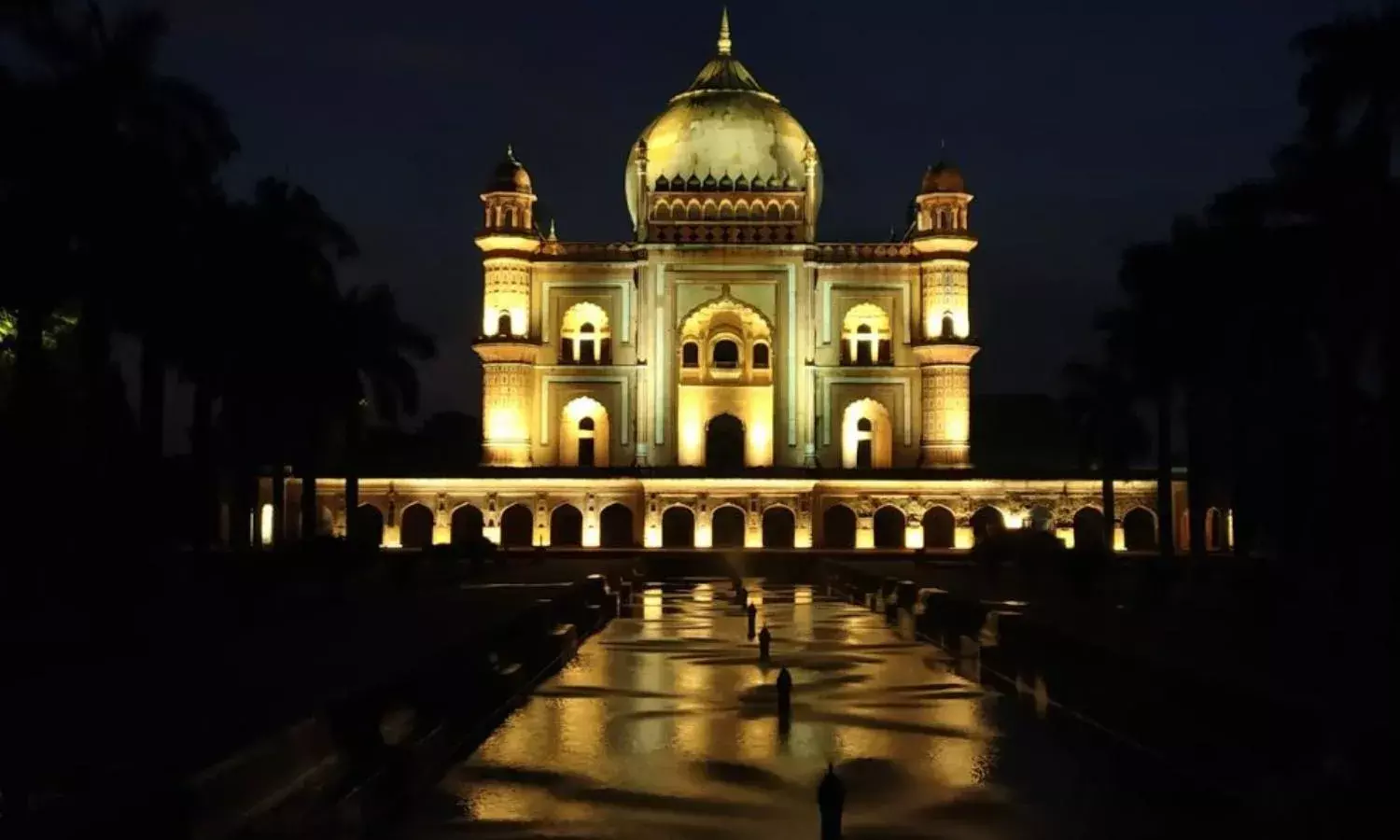A Tomb in Paradise: Safdarjung's Tomb Breathes Beauty
The ASI recently revived the water channels around the structure

Safdarjung’s Tomb, located in Delhi, is special in many ways. It is considered to be the last flicker of glory from the Mughals, a dynasty which created some of the most impressive monuments still standing, including India’s masterpiece the Taj. Besides being the last noteworthy expression of Mughal architecture, recently a couple more reasons were added for you to visit the 18th century tomb of Safdarjung.
If you visit this monument now, you will be able to see not only the impressive monument but also its reflection. The Archaeological Survey of India recently revived the long defunct water channels and fountains around the monument. This water body, which was part of the original plan, has added a new dimension to the beauty of the monument.
Additionally, Safdarjung’s Tomb is one of two monuments recently lit up by the ASI, the other being Qutub Minar. So, as the sun sets the monument is all up in lights.
Not So Noble
In the mid-18th century, when a much weakened Mughal emperor Mohammad Shah Rangila ruled, Safdar Jang was a very important noble in the Mughal court. It was Mohammad Shah Rangila, who bestowed the title of Safdar Jung on him.
Safdar Jung was also the second ruler, titled Nawab, of the semi-autonomous dynasty (originating from Persia) which ruled Awadh. In 1748 when Emperor Rangila died, Safdar Jang managed to install a new emperor of his choice on the Mughal throne, Ahmad Shah Bahadur, acquiring for himself the position of Wazir-ul-Mumalik-i-Hindustan (Prime Minister of Hindustan).
With a substantial personal army, he was much embroiled in palace politics and held complete control over the weak new emperor. Palace intrigues and power struggles with other powerful nobles eventually led to Safdar Jang’s ouster from Delhi. Twice attempts were made on his life by his rivals. But he survived. Later he shifted to his fiefdom, Awadh.
The image Safdarjung curated for himself has many dark shades and deeds attached to it. A noble wielding immense power in the Mughal court, he wanted yet more. The story goes that it was Safdarjung who invited the Persian king Nadir Shah to Delhi, so he would depose the Mughal emperor from the throne. A move that cost Delhi dearly, in terms of many lives and innumerable wealth and treasures lost, including the Peacock Throne and the Kohinoor.
The tomb was built in 1754 after his death, by his son Shuja-ud-Daula, the next Nawab of Awadh. Although Safdarjung died in Awadh’s capital Lucknow, he was buried in Delhi given his political importance. The tomb’s location he chose himself while he was still living: near the holiest Shia site in Delhi known as the Dargah Shah-e-Mardan, in present day Jor Bagh, also popularly known as Karbala.
While Humayun’s Tomb near Nizamuddin is considered to be the precursor of the Taj Mahal, Safdarjung’s Tomb is sometimes regarded as the poor man’s Taj. Visitors tend to compare it with the Taj Mahal overlooking the fact that it has many individualistic architectural elements.
Due to a shortage of funds, the tomb was built after pillaging stone slabs and marble from a few other monuments in Delhi, particularly the early 17th-century tomb of Abdul Rahim Khan-i-Khana, located near Nizamuddin. This tomb, which belongs to a famous poet, military general and noble from Akbar’s time, still stands today with a dome and its stone slabs ripped off. Under ASI protection it is currently being restored by the Agha Khan Trust for Culture.
Safdarjung’s tomb is built in what is called the Baghdadi octagonal style, with a multi-chamber burial hall. The dome of the building is onion shaped in signature Mughal style— other excellent examples of this style are Delhi’s Jama Masjid and the Taj.
Inside the tomb contains bird motifs, a rarity in Mughal structures. The building uses many elements of Rajput architecture as well, such as balconies and cusped arches. The marble stones pillaged from other monuments are placed a bit haphazardly, which affects the aesthetics.
The tomb is surrounded by a garden in the charbagh style, with water channels used as an aesthetic element, mimicking paradise with its gardens and rivers. The manicured lawns one sees today around the main structure are a modern day addition. The original tomb was surrounded by trees, shrubs and platforms to put up tents.
Do ignore the palm trees as well, as they were not part of the original plans, and were brought in by the British from South Africa.
The ASI keeps the monument open for visitors till 11 PM. Visitor access after sunset is restricted to a cordoned off viewing area.


